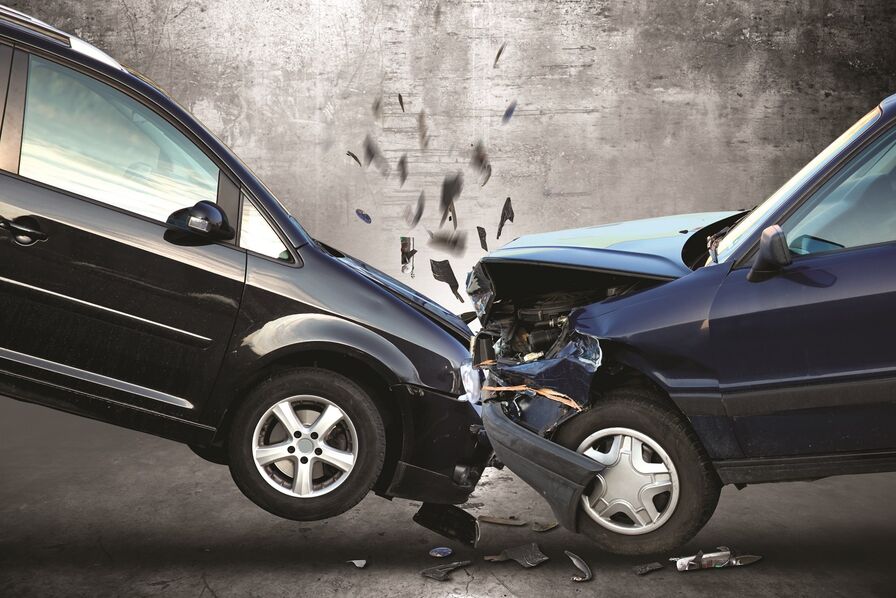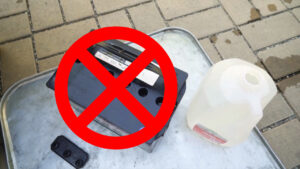Non-at-fault road accidents: advantages and disadvantages
In this article, we'll look at the pros and cons of being involved in a road accident as a not-at-fault driver. Find out how this situation can affect your daily life, your car insurance and your relations with other drivers. Find out about the rights and remedies available in such cases. Stay alert to understand the consequences of this situation where responsibility is not on your side.
The 3 MISTAKES to avoid after a road ACCIDENT
[arve url="https://www.youtube.com/embed/ekvnnPo9myE "/]
What reimbursement is available in the event of a not-at-fault accident?
In the event of a not-at-fault accident, the law provides for full reimbursement of the damages suffered by the victim. This means that if you've been involved in a car accident for which you weren't at fault, your car insurance must cover all the costs of repairing your vehicle, as well as any medical or rehabilitation expenses.
However, it is important to note that reimbursement may vary depending on your insurance policy and the specific terms of your contract. It is therefore advisable to contact your insurance company for detailed information on reimbursement conditions in your specific situation.
In addition, it is advisable to gather all the evidence necessary to prove that you were not at fault in the accident, such as witness statements, police reports and photographs of the accident scene.This information will help you to support your claim with your insurance company and avoid any confusion or disputes later on.
In short, in the event of a not-at-fault accident, you have the right to claim full reimbursement for the damage suffered. Be sure to contact your insurance company for specific information on reimbursement terms in your particular case. Gather all the evidence you need to support your claim.
Who pays for not-at-fault accident repairs?
In the case of an accident where the driver is not at fault, the repair costs are generally covered by the at-fault driver's insurance. This means that the insurer of the person who caused the accident is responsible for covering the cost of repairing the damaged vehicle. However, it is important to note that each situation may vary according to the specific circumstances of the accident and individual insurance policies. It is therefore advisable to contact the insurer directly for precise and detailed information on coverage and repair procedures.
How does insurance work when you're not at fault?
When you are not at fault in an accident, insurance generally intervenes in the following way:
1. Accident report : You must report the accident to your insurer as soon as possible. This can be done by telephone, online or by post.
2. Collecting evidence : It's important to collect all available evidence to prove that you were not at fault for the accident. This can include witness statements, photos of the accident scene, police reports, etc.
3. Expertise : Your insurer may send an expert to assess the damage to your vehicle. This expert will also check the evidence you have collected to determine who was at fault for the accident.
4. Repairs : If you receive compensation from your insurer, it will pay for repairs to your vehicle. How much your insurer will pay depends on the deductible you have chosen in your insurance contract.
5. Reimbursement of expenses : If medical or other expenses have been incurred in connection with the accident, your insurance may also cover these costs, depending on the terms of your policy.
It's important to note that each insurance company has its own procedures and policies. So be sure to read your insurance contract carefully, and contact your insurer for information specific to your situation.
How do insurance companies pay for a not-at-fault claim?
When an automobile accident occurs and the driver is not at fault, insurance companies generally step in to compensate for the damage. The steps to follow are as follows:
1. Declaration of loss : First of all, the driver must contact his insurer as soon as possible to report the accident. It is important to provide all the necessary information, such as the date, time and place of the accident, as well as the contact details of those involved and any witnesses.
2. Vehicle appraisal : The insurer may request an expert appraisal of the damaged vehicle in order to estimate the necessary repairs and their cost. To do this, an expert can be commissioned to carry out a precise assessment of the damage.
3. Coverage of repair costs : Once the appraisal has been carried out and validated, the insurer will cover the cost of repairing the damaged vehicle. This may include the repair of material damage, such as bodywork or mechanical components, as well as any towing costs.
4. Reimbursement of medical expenses : If the driver or passengers are injured in the accident, the insurance may also cover the medical costs of necessary treatment. Medical evidence is often required for this coverage.
5. Compensation for damages : In addition to paying for repairs and medical expenses, the insurance may also compensate the driver for damages such as days the vehicle is immobilized or loss of value due to the accident.
It is important to note that procedures may vary from one insurance company to another, as well as according to the terms of the specific insurance contract. It is therefore advisable to refer to the general conditions of your contract, or to contact your insurer directly for further details.
In conclusion, it's clear that not-at-fault road accidents have both advantages and disadvantages. On the one hand, victims of these accidents can benefit from financial compensation to cover property damage and injuries sustained. This can help relieve the financial burden resulting from the accident.
On the other hand, these accidents can also have damaging emotional and mental consequences. Victims can experience a major disruption to their daily lives, and recovery can take time.
In any case, it's important to remember that preventing road accidents is always the priority. By observing the rules of the road and remaining vigilant, we can considerably reduce the number of accidents and protect the safety of all road users.
Vigilance on the road is essential to avoid accidents. It's also important to know your rights as a victim of a not-at-fault accident, and to seek the help of competent professionals to obtain fair compensation.
Ultimately, every road accident is unique and deserves special attention. The best way to deal with these situations is to be informed, prepared and seek the help you need to recover from this traumatic event.








